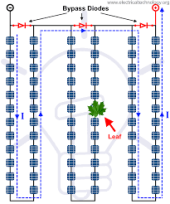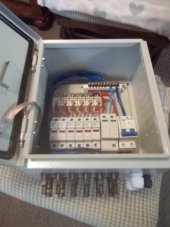Sprucebeach
New Member
- Joined
- Aug 14, 2021
- Messages
- 12
I'm planning to mount 16 panels in portrait orientation in a long single row under the ridge of my roof. In the morning because of trees to the east, the panels will be exposed to sun progressively from west to east. In the afternoon trees to the west will shade the panels one-by-one from west to east. I'm planning to bring 8 panels to each of two MPPT's, but I'm not experienced enough to know how to connect them so as to maximize my output.
My first thought was to connect each 8-panel group to an MPPT in a single 8S1P string. But because the eight panels will be at first exposed to the sun one at a time and then later blocked by shade one at a time, I wondered if connecting each group of eight as a 4S2P string might be better. I just can't visualize what the power output would do in the face of progressive uncovering and covering of the panels during the day. (Note that while a diagram for this parallel arrangement would normally show the panels in two rows the physical layout would still be a single row of eight for each MPPT.)
I'd appreciate any suggestions from those who have a better idea than I do about how the output would respond in these two configurations as the panels are progressively exposed and shaded.
My first thought was to connect each 8-panel group to an MPPT in a single 8S1P string. But because the eight panels will be at first exposed to the sun one at a time and then later blocked by shade one at a time, I wondered if connecting each group of eight as a 4S2P string might be better. I just can't visualize what the power output would do in the face of progressive uncovering and covering of the panels during the day. (Note that while a diagram for this parallel arrangement would normally show the panels in two rows the physical layout would still be a single row of eight for each MPPT.)
I'd appreciate any suggestions from those who have a better idea than I do about how the output would respond in these two configurations as the panels are progressively exposed and shaded.




